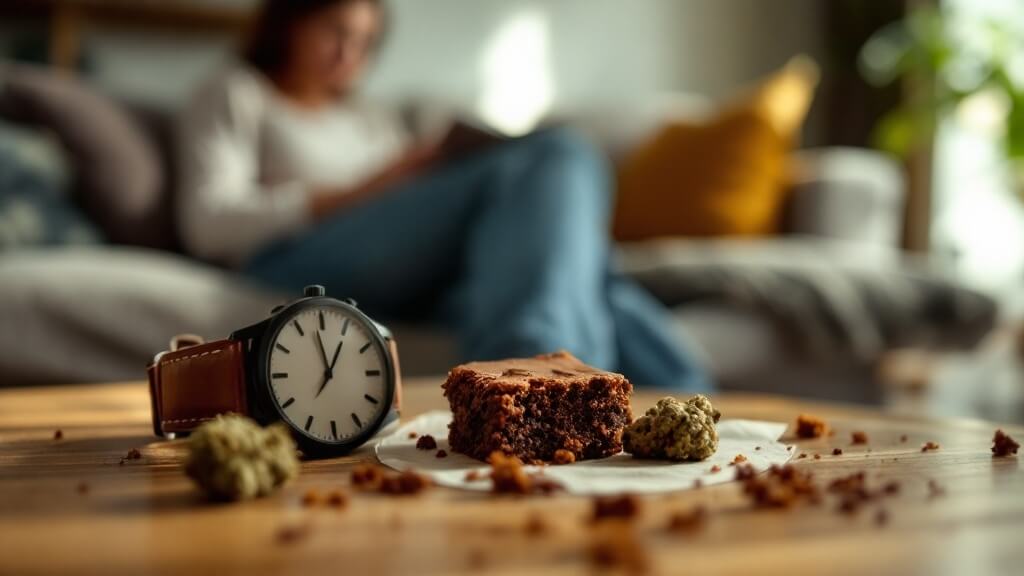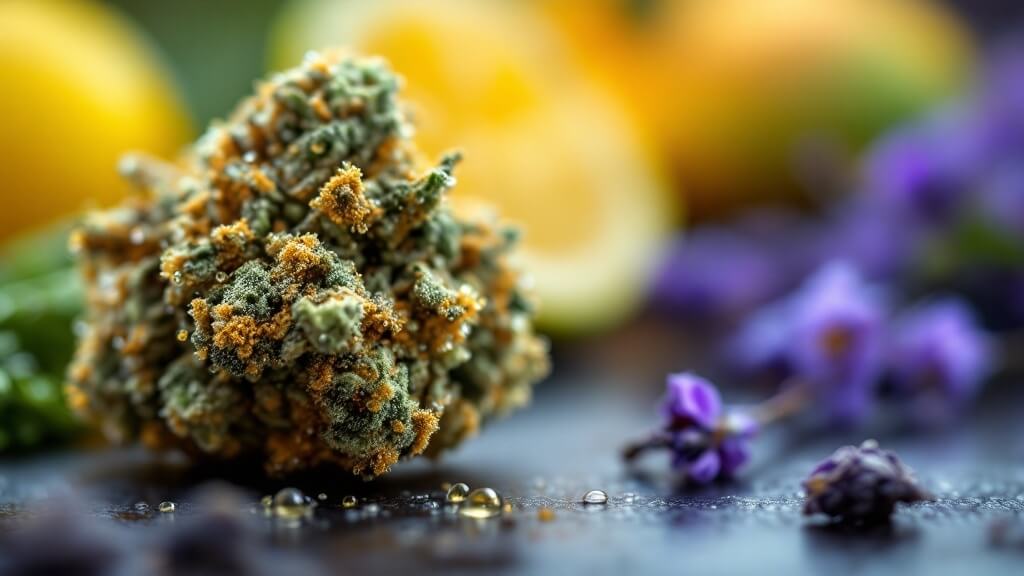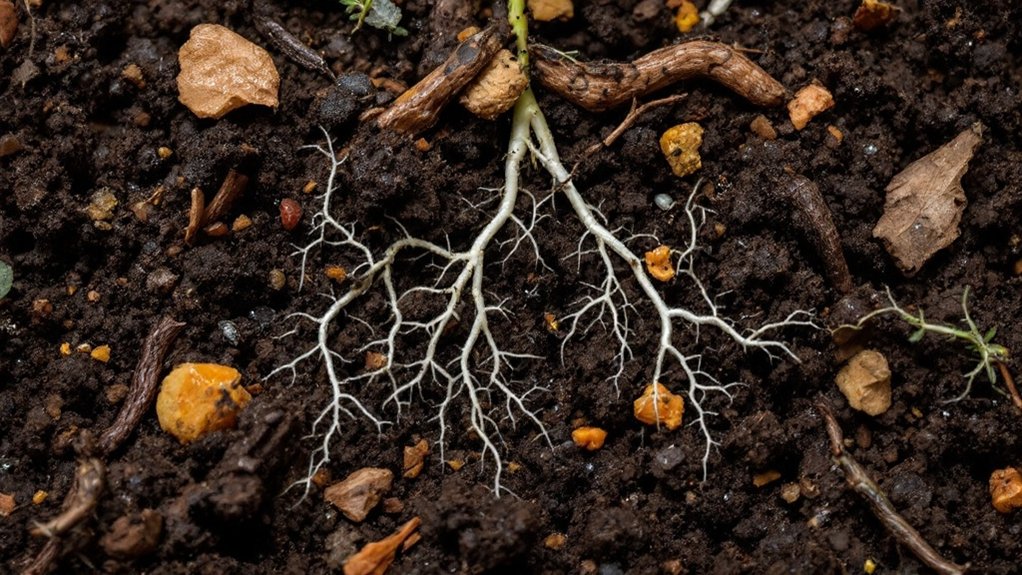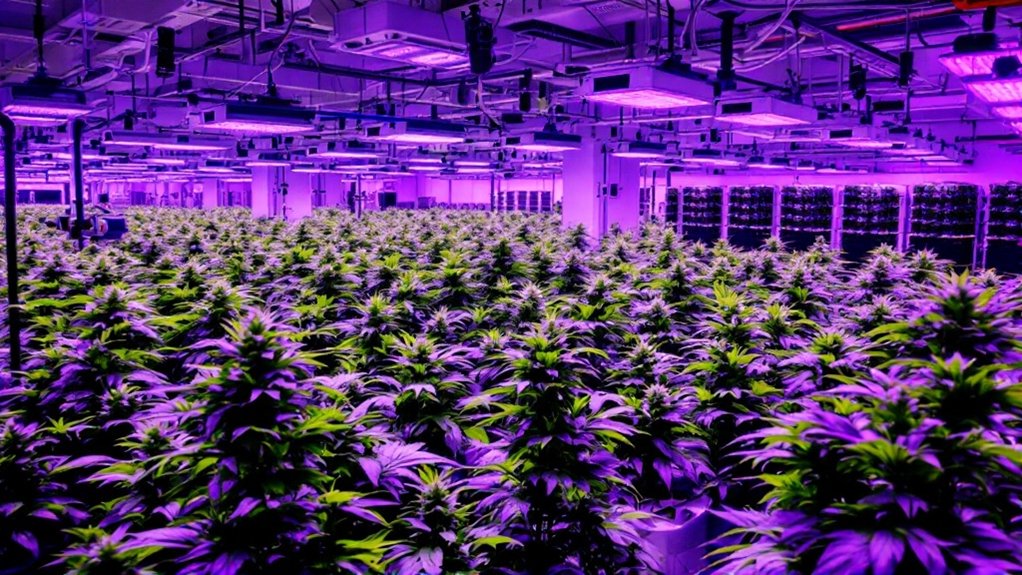Cannabis edibles typically take 30-60 minutes to begin producing effects, with peak intensity occurring 2-3 hours after consumption. This delay results from THC’s journey through the digestive system and liver, where it converts to 11-hydroxy-THC—a more potent compound that crosses the blood-brain barrier efficiently. Individual factors like metabolism, body composition, and stomach contents greatly influence onset timing. Effects can persist for 6-8 hours, with residual sensations lasting up to 24 hours. Understanding this timeline helps consumers navigate their experience more effectively.

When cannabis enthusiasts choose edibles over smoking, understanding the timeline becomes vital for a predictable experience. Unlike inhaled cannabis, which delivers effects within minutes, edibles follow a more gradual and extended path through the body. The typical onset for edibles ranges from 30 to 60 minutes after consumption, though this window can extend up to two hours depending on individual physiology and digestive conditions. This delayed reaction occurs because THC must navigate the entire digestive system before entering the bloodstream, creating a fundamentally different experience compared to the rapid absorption through lung tissue that occurs with smoking.
Edibles demand patience, delivering their effects through a slower digestive journey unlike smoking’s immediate impact.
The digestive process plays an important role in the timeline of edible effects. When consumed, cannabis edibles must first be broken down in the stomach before moving to the small intestine for absorption. The presence of other food in the digestive tract greatly impacts this process. On an empty stomach, absorption typically accelerates, while a full stomach delays the onset as the edible competes with other food for digestive processing. Sublingual edibles like tinctures and dissolvable strips can produce effects much faster, typically within 15 to 30 minutes due to absorption through oral mucosa. The type of edible matters as well, with liquid forms generally being processed more quickly than solid products that require additional breakdown. Moreover, nano-emulsification techniques used in some fast-acting edibles allow for quicker absorption and onset of effects.
After absorption through the intestinal walls, THC travels directly to the liver through the portal vein in what scientists call first-pass metabolism. This vital stage transforms delta-9-THC into 11-hydroxy-THC, a notably more potent metabolite that crosses the blood-brain barrier more effectively. This metabolic transformation explains why edibles often produce stronger and longer-lasting effects than equivalent doses of smoked cannabis. Research shows that only about 10% of cannabinoids are effectively absorbed, with the remaining 90% being degraded or excreted without producing any effects.
The peak effects of cannabis edibles typically manifest 2-3 hours after ingestion, coinciding with maximum blood concentration of 11-hydroxy-THC. This period represents the most intense phase of the experience as the compound fully saturates cannabinoid receptors throughout the body. Following this peak, effects gradually diminish over an extended period of 6-8 hours, though residual effects may persist for up to 24 hours in some individuals.
Individual factors create considerable variation in edible timelines. Metabolism rates, body composition, previous cannabis experience, and tolerance levels all influence how quickly effects emerge and how long they endure. This variability underscores why the standard guidance for edibles often emphasizes waiting at least two hours before considering additional consumption.
Frequently Asked Questions
Can I Drive After Consuming Edibles?
Individuals should not drive after consuming cannabis edibles due to documented impairment effects on motor coordination, reaction time, and decision-making abilities.
Research indicates that impairment from edibles can persist for 6-8 hours, with effects sometimes lasting up to 24 hours.
Health Canada and the AAA recommend waiting at least 6 hours before driving, though this timeframe should be extended for new users or after consuming larger amounts.
Blood THC levels do not reliably indicate driving fitness.
Do Edibles Show up on Drug Tests?
Yes, edibles do show up on drug tests.
Standard drug screening methods detect THC metabolites regardless of consumption method. Urine tests can identify edible use for 3-30 days, depending on usage frequency.
Blood tests typically detect THC for 1-7 days after consumption, while saliva tests show results for 1-3 days.
Hair follicle tests have the longest detection window, identifying THC consumption for up to 90 days after ingestion.
How Do I Store Edibles Properly?
Proper edible storage requires several key measures to maintain potency and freshness.
Cannabis edibles should be kept in airtight, opaque containers at temperatures below 70°F (21°C) in dark locations to prevent light degradation.
Refrigeration extends shelf life for dairy-based products, while freezing suits long-term storage of baked goods.
Humidity levels should remain below 60% to prevent mold growth.
Separate storage from regular food items prevents accidental consumption, with clear labeling indicating contents and dates.
Can I Mix Alcohol With Edibles?
Combining alcohol with cannabis edibles considerably intensifies THC’s effects in the body.
Alcohol increases THC absorption, resulting in higher blood concentrations and potentially uncomfortable side effects including dizziness, nausea, and impaired coordination.
This combination leads to longer-lasting intoxication and makes it difficult to gauge impairment levels.
Research indicates that drinking before consuming cannabis produces stronger effects than the reverse order, while also doubling the likelihood of engaging in risky behaviors like impaired driving.
How Do I Stop Feeling Too High From Edibles?
To reduce intense effects from cannabis edibles, several effective approaches can be implemented.
Hydration with water and vitamin C consumption can help metabolize THC more efficiently. CBD products counteract THC effects through antagonistic interaction at cannabinoid receptors.
Physical interventions like light exercise or cold showers may increase alertness while decreasing high sensations.
Mental management techniques, including meditation and distraction with familiar entertainment, can reduce associated anxiety.
Creating a calm environment with minimal sensory stimulation allows the body to process cannabinoids naturally until the effects subside.








